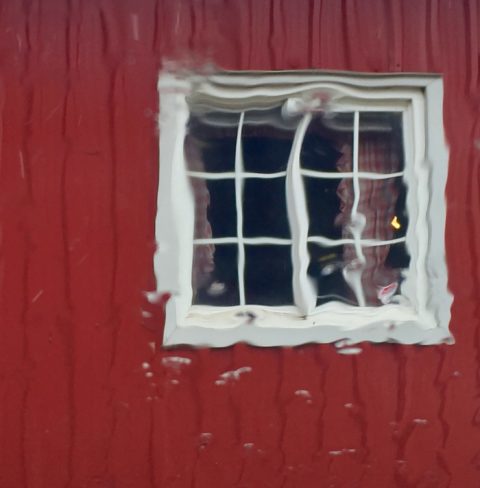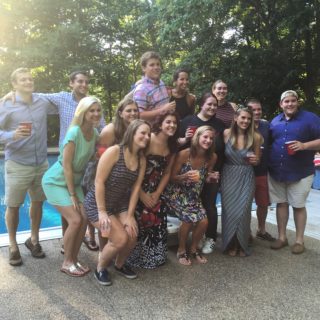Visual Intelligence: “the ability to see what’s there that others don’t, to see what’s not there that should be, to see the positives and the negatives, the opportunity, the invention, the upside, the warning signs, the quickest way, the way out, the win.” ~ Amy E. Herman, Visual Intelligence: Sharpen your Perception, Change your Life
 One would think that my visual intelligence would be pretty high since I teach workshops on seeing. But, we teach what we need to learn, right?
One would think that my visual intelligence would be pretty high since I teach workshops on seeing. But, we teach what we need to learn, right?
My natural tendency is to see the big picture and I can easily tap into the emotional undercurrent of a scene or situation. But, the details? Not so much.
In her fascinating book, Visual Intelligence: Sharpen your Perception, Change your Life, Amy Herman describes how visual intelligence can be learned like any other skill with daily practice. While working at the Frick Gallery in New York City as an art historian, Herman created a course called The Art of Perception, designed to train FBI agents, cops, CEOs, ER docs, and others to perceive and communicate better through closely observing famous paintings. This seminar teaches skills important for all of life; how to identify the most important information, as well as the threats and possibilities in every situation. These skills can change our lives for the better, and even save money, reputations, and lives.
“The ability to see, to pay attention to what is often readily available right in front of us is not only a means to avert disaster but also the precursor and prerequisite to great discovery.” ~ Amy Herman
What does this have to do with photography?
Well, like photographer Dorothea Lange, I believe the camera is a tool that teaches us how to see. The practice of presence and composition using visual design principles has helped me learn to see and make better photographs. Yet, Herman invites us to go further. She asks us to not just see, but to observe.
“Seeing is automatic, involuntary recording of images. Observing is seeing, but consciously, carefully, and thoughtfully.”
In my workshops, I recommend a practice of close observation where you look at a chosen subject from multiple angles and perspectives. Then, take a minimum of 24 photographs. Along the way, you’ll reach a point where you think you’ve exhausted all possibilities. But, if you pause and stay with it, new ideas will come eventually. This is where your creativity kicks in.
In Herman’s seminar, participants study famous paintings and identify objective details (the facts). They notice when subjective filters come up (biased interpretations and assumptions) and determine what’s missing and what’s unknown. They answer as best as they can the questions who, what, when, and where; and state only empirical facts. They notice when assumptions, opinions, and feelings creep in. For example, instead of saying “the girl is frowning,” say “the girl’s mouth is closed and the ends are turned down.” Herman also advises being as specific as possible, for example, instead of the word “car,” say “black SUV.”
Sometimes it’s a minor detail that turns out to be the most important. The essence is in the details.
We can practice the art of close observation while photographing by pausing and focusing on these details before clicking the shutter. Write down or make a mental note of all of the objective details of the scene. Now, look more closely. What did you miss the first time? Move around and look at the scene from different angles and perspectives. Does this bring up new details you missed from another vantage point?
“Slowing down doesn’t mean being slow, it just means taking a few minutes to absorb what we are seeing. Details, patterns, relationships, take time to register. Nuances and new information can be missed if we rush past them. Slowing down just a little can change a lot. And in many cases, it’s the small, purpose-filled moments that make all the difference in building relationships, securing business, and winning trust.” ~ Amy Herman
Next, prioritize the essential elements of the scene to determine what should be in the photograph and what should be left out. To include unnecessary elements only distracts from your subject or message. While this process may seem laborious, the practice will eventually become quick and intuitive.
 When I posted this image of the grown up kids from our old neighbourhood, I initially panicked because it seemed as though my son was not in the picture. How did that happen?
When I posted this image of the grown up kids from our old neighbourhood, I initially panicked because it seemed as though my son was not in the picture. How did that happen?
First, you probably noticed the young adults in the picture were not looking at me. I was one of three photographers and I was on the far left. A closer look shows a hand and a hint of blue on the right shoulder of the boy with the plaid shirt in the top middle of the frame. I didn’t see this important detail on my first look. My son was between this boy and the girl on his left, visible to the other photographer but not to me.
I’ve decided to practice the art of close observation on a daily basis – while I photograph, or wait in line or sit at a stoplight. I can practice when I eat a meal or talk to a friend. I’ll post photographs weekly, with the first one this Saturday, on the Adventures in Seeing page on Facebook (and also on Google+). I invite you to tell me what you see. Can you discover details not seen by others? I hope you’ll join me there so we can practice together.
Practice close observation and up your visual intelligence.
** Books mentioned have Amazon or Bookshop affiliate links, meaning I make a few cents if you purchase through my link. I only recommend books that I’ve read.
Take the Quiz: Test Your Visual Intelligence Here